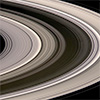 A recent doctoral thesis, Diving Deep into Saturn's Equatorial Ionosphere with Cassini: Insights from the Grand Finale, focuses on the composition of plasma, charged particles, in the upper part of Saturn's atmosphere and how our understanding of it has evolved since the discovery of the ring influx.
A recent doctoral thesis, Diving Deep into Saturn's Equatorial Ionosphere with Cassini: Insights from the Grand Finale, focuses on the composition of plasma, charged particles, in the upper part of Saturn's atmosphere and how our understanding of it has evolved since the discovery of the ring influx.
Nov 22nd, 2023
Read more
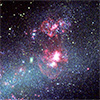 Rsearchers found that less evolved dwarf galaxies have higher star formation rates due to a 10-million-year delay in expelling gas and dust, allowing more stars to form and evolve.
Rsearchers found that less evolved dwarf galaxies have higher star formation rates due to a 10-million-year delay in expelling gas and dust, allowing more stars to form and evolve.
Nov 22nd, 2023
Read more
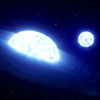 A ground-breaking new discovery could transform the way astronomers understand some of the biggest and most common stars in the Universe.
A ground-breaking new discovery could transform the way astronomers understand some of the biggest and most common stars in the Universe.
Nov 22nd, 2023
Read more
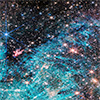 The latest image from the James Webb Space Telescope shows a portion of the dense center of our galaxy in unprecedented detail, including never-before-seen features astronomers have yet to explain.
The latest image from the James Webb Space Telescope shows a portion of the dense center of our galaxy in unprecedented detail, including never-before-seen features astronomers have yet to explain.
Nov 20th, 2023
Read more
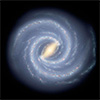 Astrophysicists say they have found an answer to why spiral galaxies like our own Milky Way are largely missing from a part of our Local Universe called the Supergalactic Plane.
Astrophysicists say they have found an answer to why spiral galaxies like our own Milky Way are largely missing from a part of our Local Universe called the Supergalactic Plane.
Nov 20th, 2023
Read more
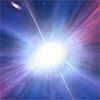 Astronomers are baffled by a mysterious and extremely bright event in the distant Universe, nicknamed the 'Tasmanian Devil', which has been observed to explode repeatedly and emit more energy than hundreds of billions of stars like our Sun.
Astronomers are baffled by a mysterious and extremely bright event in the distant Universe, nicknamed the 'Tasmanian Devil', which has been observed to explode repeatedly and emit more energy than hundreds of billions of stars like our Sun.
Nov 16th, 2023
Read more
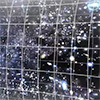 The universe's expansion rate exceeds predictions, causing the Hubble tension mismatch. Analysis indicates that late-universe solutions like evolving dark energy cannot fully resolve the discrepancy. Physicists must search for new early-universe ideas to explain the accelerating expansion.
The universe's expansion rate exceeds predictions, causing the Hubble tension mismatch. Analysis indicates that late-universe solutions like evolving dark energy cannot fully resolve the discrepancy. Physicists must search for new early-universe ideas to explain the accelerating expansion.
Nov 15th, 2023
Read more
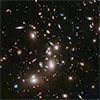 Follow-up observations in Pandora's cluster confirmed the second- and fourth-most distant galaxies ever seen, which are larger than other galaxies at such extreme distances.
Follow-up observations in Pandora's cluster confirmed the second- and fourth-most distant galaxies ever seen, which are larger than other galaxies at such extreme distances.
Nov 13th, 2023
Read more
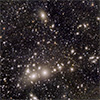 Euclid space telescope delivers first scientific images.
Euclid space telescope delivers first scientific images.
Nov 8th, 2023
Read more
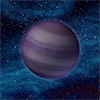 With the help of the James Webb Space Telescope, a team of researchers measured ammonia in the atmosphere of a cold brown dwarf, showing that the isotopic abundance of ammonia can be used to study how giant gas planets form.
With the help of the James Webb Space Telescope, a team of researchers measured ammonia in the atmosphere of a cold brown dwarf, showing that the isotopic abundance of ammonia can be used to study how giant gas planets form.
Nov 7th, 2023
Read more
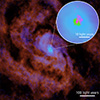 New observations down to light-year scale of the gas flows around a supermassive black hole have successfully detected dense gas inflows and shown that only a small portion (about 3 percent) of the gas flowing towards the black hole is eaten by the black hole. The remainder is ejected and recycled back into the host galaxy.
New observations down to light-year scale of the gas flows around a supermassive black hole have successfully detected dense gas inflows and shown that only a small portion (about 3 percent) of the gas flowing towards the black hole is eaten by the black hole. The remainder is ejected and recycled back into the host galaxy.
Nov 3rd, 2023
Read more
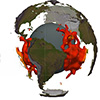 The remnants of an ancient planet that collided with Earth to form the Moon lie deep within the earth, according to a new model.
The remnants of an ancient planet that collided with Earth to form the Moon lie deep within the earth, according to a new model.
Nov 1st, 2023
Read more
 Giant gas planets can be agents of chaos, ensuring nothing lives on their Earth-like neighbors around other stars. New studies show, in some planetary systems, the giants tend to kick smaller planets out of orbit and wreak havoc on their climates.
Giant gas planets can be agents of chaos, ensuring nothing lives on their Earth-like neighbors around other stars. New studies show, in some planetary systems, the giants tend to kick smaller planets out of orbit and wreak havoc on their climates.
Oct 31st, 2023
Read more
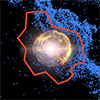 A new way to simulate supernovae may help shed light on our cosmic origins.
A new way to simulate supernovae may help shed light on our cosmic origins.
Oct 27th, 2023
Read more
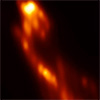 Using a network of radio telescopes on Earth and in space, astronomers have captured the most detailed view ever of a jet of plasma from a supermassive black hole. The jet travels at nearly the speed of light and shows complex, twisted patterns near its source.
Using a network of radio telescopes on Earth and in space, astronomers have captured the most detailed view ever of a jet of plasma from a supermassive black hole. The jet travels at nearly the speed of light and shows complex, twisted patterns near its source.
Oct 26th, 2023
Read more
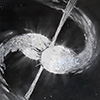 Researchers have used the James Webb Space Telescope to study a gamma-ray burst, which turned out to be the second-brightest ever seen. The study revealed the creation of the element tellurium which had not been recognized before.
Researchers have used the James Webb Space Telescope to study a gamma-ray burst, which turned out to be the second-brightest ever seen. The study revealed the creation of the element tellurium which had not been recognized before.
Oct 26th, 2023
Read more
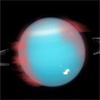 The presence of an infrared aurora on the cold, outer planet of Uranus has been confirmed for the first time. The discovery could shed light on the mysteries behind the magnetic fields of the planets of our solar system, and even on whether distant worlds might support life.
The presence of an infrared aurora on the cold, outer planet of Uranus has been confirmed for the first time. The discovery could shed light on the mysteries behind the magnetic fields of the planets of our solar system, and even on whether distant worlds might support life.
Oct 26th, 2023
Read more
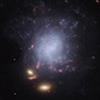 Scientists have observed the creation of rare chemical elements in the second-brightest gamma-ray burst ever seen - casting new light on how heavy elements are made.
Scientists have observed the creation of rare chemical elements in the second-brightest gamma-ray burst ever seen - casting new light on how heavy elements are made.
Oct 25th, 2023
Read more
 A recent doctoral thesis, Diving Deep into Saturn's Equatorial Ionosphere with Cassini: Insights from the Grand Finale, focuses on the composition of plasma, charged particles, in the upper part of Saturn's atmosphere and how our understanding of it has evolved since the discovery of the ring influx.
A recent doctoral thesis, Diving Deep into Saturn's Equatorial Ionosphere with Cassini: Insights from the Grand Finale, focuses on the composition of plasma, charged particles, in the upper part of Saturn's atmosphere and how our understanding of it has evolved since the discovery of the ring influx.
 Subscribe to our Space Exploration News feed
Subscribe to our Space Exploration News feed















